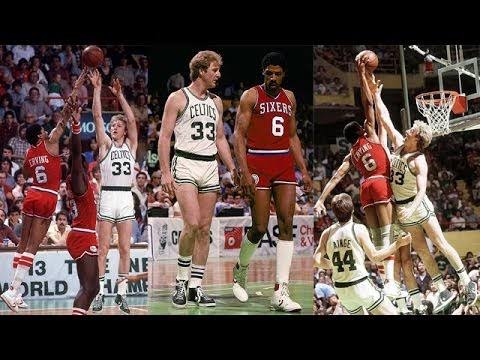Prime Larry Bird or Prime Julius Erving? NBA Greatest Debate Shows That…

The debate over who was the better player in their prime, Larry Bird or Julius Erving, is one of the most captivating in NBA history. Both players brought unique skill sets and left indelible marks on the game, leading to endless discussions among fans, analysts, and former players.
Larry Bird, known for his incredible shooting, basketball IQ, and versatility, was the epitome of a team player. Standing 6’9″ and playing as a forward, Bird was renowned for his ability to shoot from anywhere on the court, his excellent passing, and his tenacious defense. His career with the Boston Celtics was marked by three NBA championships, three MVP awards, and twelve All-Star selections. Bird’s competitive nature and clutch performances made him a legend, particularly in the 1980s when he led the Celtics to numerous victories against their fierce rivals, the Los Angeles Lakers.
Julius Erving, or “Dr. J,” brought flair and athleticism to the NBA that few had seen before. Known for his high-flying dunks and smooth style, Erving was a forward who could dominate games with his scoring and physical presence. He was a key figure in the ABA before the merger with the NBA, winning two ABA championships and several MVP awards. In the NBA, Erving continued his dominance with the Philadelphia 76ers, leading them to an NBA championship in 1983 and earning an MVP award along with eleven All-Star selections. His influence on the game extended beyond his statistics, as he inspired a generation of players with his dynamic play and charisma.
The argument for Bird centers on his all-around game and his ability to make his teammates better. Bird’s exceptional court vision and passing ability allowed him to involve his teammates in ways that few forwards could. His shooting was also unparalleled, with a career three-point shooting percentage of 37.6% and numerous game-winning shots. Bird’s mental toughness and ability to perform in clutch moments are often cited as reasons why he should be considered the superior player.
On the other hand, Erving’s athleticism and scoring ability were unmatched. He was one of the first players to bring a level of artistry to the game with his dunks and acrobatic layups. Erving’s impact on the game was profound, as he helped popularize the sport and brought a new level of excitement to the NBA. His ability to take over games with his scoring and his defensive prowess made him a formidable opponent.
Statistically, both players have impressive resumes. Bird averaged 24.3 points, 10.0 rebounds, and 6.3 assists per game over his career, while Erving averaged 24.2 points, 8.5 rebounds, and 4.2 assists per game. Bird’s shooting percentages, particularly from beyond the arc, give him an edge in efficiency, but Erving’s scoring and rebounding numbers are equally compelling.

Beyond the numbers, the debate often comes down to the era in which each player excelled and their respective styles of play. Bird’s success in the highly competitive 1980s, often against Erving’s 76ers, adds weight to his argument. However, Erving’s impact in both the ABA and NBA, along with his revolutionary style of play, makes his case just as strong.
In conclusion, the debate between prime Larry Bird and prime Julius Erving highlights the differing qualities that each brought to the game. Bird’s all-around skills, shooting, and leadership contrast with Erving’s athleticism, scoring, and pioneering style. Both players are legends who contributed significantly to the sport’s history, and choosing one over the other often comes down to personal preference and the aspects of the game one values most. The debate is a testament to the greatness of both players and their lasting impact on basketball.



